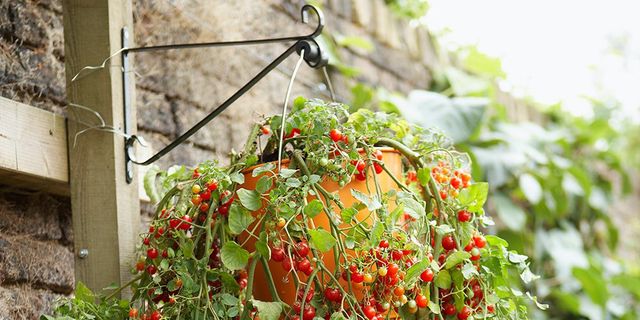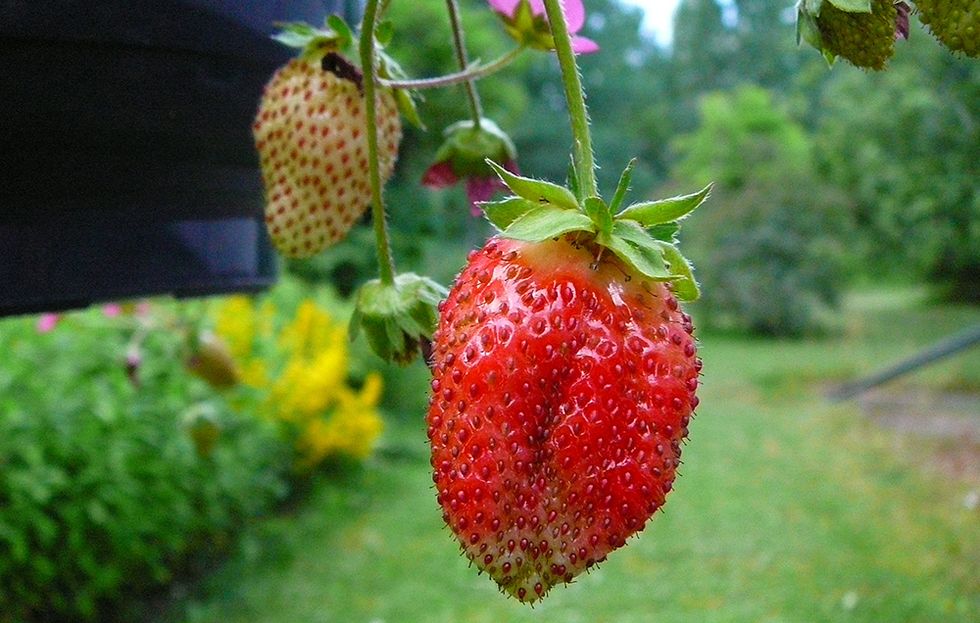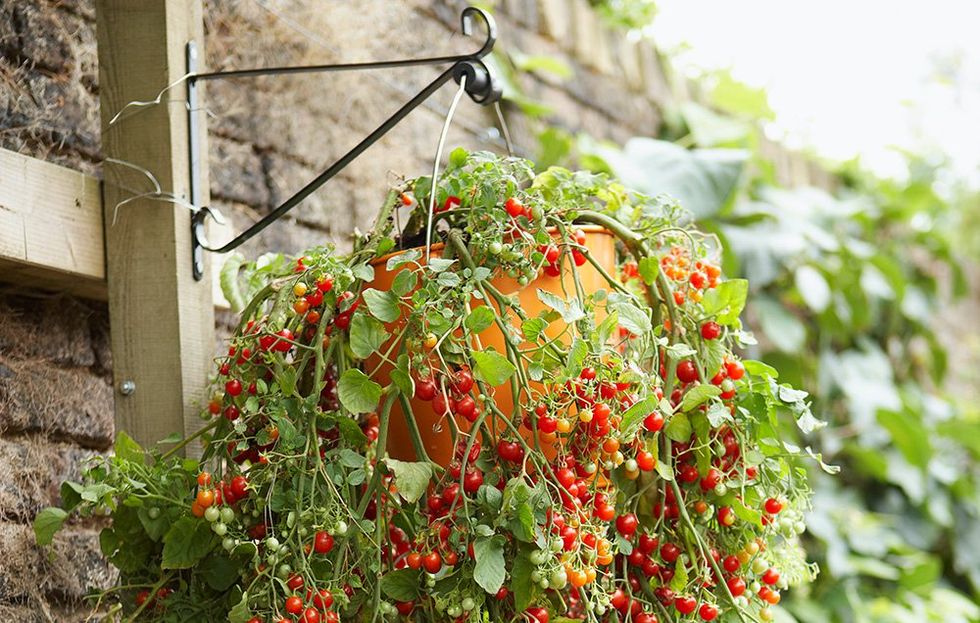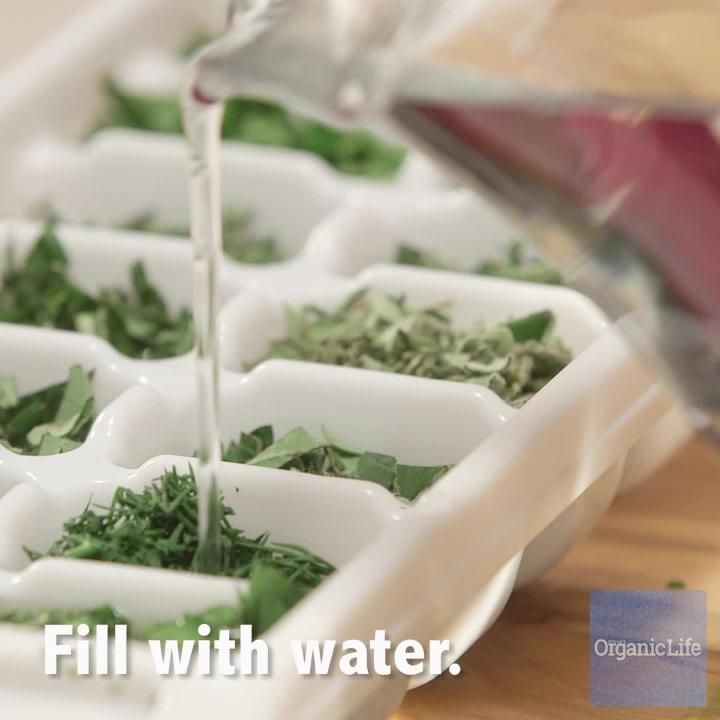It’s time to take your container garden off the ground. Growing vegetables and fruits in hanging baskets frees up space in your garden (and on your back porch) so that you can grow even more plants in a small space. Or even if you’re not worried about space, growing food crops in a hanging planter is still a fun way to add visual interest to your garden—who says veggies can’t be as beautiful as flowers?
(No room? No problem! See how you can grow tomatoes in the driveway, dill on the deck, and peppers on the porch with Rodale's Edible Spots & Pots—get your copy now!)
Of course, not every crop can make it in a hanging basket—watermelons are too heavy and corn is far too tall. But there are still plenty of smaller plants that won't break your basket. Maggie Saska, plant production specialist at the Rodale Institute, suggests vining crops whose fruits are light enough to handle the drooping action without breaking off, as well as smaller upright varieties.
When choosing your basket, go with one that will be able to support the weight of growing vines and produce, as well as water. A basket that hangs from a chain will be a better bet than a basket with a plastic hook, for example.
Prepare the basket just as you would for planting flowers, with a good potting mix. Saska advises applying a slow-release fertilizer or fish emulsion throughout the summer as it can be difficult for produce to get all the nutrients they need in a container. You’ll also have to be vigilant about watering, especially in the height of summer, because soil in hanging baskets dries out quickly. Consider placement of the basket too, based on what type of crop you're growing. Hanging your planter beneath your porch roof likely won't provide enough sunlight for most crops, for example, but a shepherd's hook or your garden fence will work just fine.
Otherwise, growing produce in hanging baskets isn't much different from growing it in pots on the ground! Here are a few crops that will do well way up high.
Strawberries
Growing strawberries in a hanging basket is no different from growing them in a pot. Small, sweet alpine strawberries are a good variety to choose since they’ll tolerate partial shade, bear fruits all summer, and require little maintenance. Strawberries have shallow roots, so be sure to water frequently to avoid drought-stressed plants.
Lettuce
Lettuce is an ideal crop for a hanging basket because it’s lightweight and easy to grow. It likes full sun except during the brutal summer months, when a bit of afternoon shade is essential for keeping the leaves from wilting and turning bitter. Consider interplanting it with strawberries, herbs, or even flowers. Or, create one of these awesome salad balls by attaching two coir planters together and planting lettuce seedlings over the entire surface.
Cherry Tomatoes
Good news: cherry tomatoes are one of the easiest plants for new gardeners to grow and they’re one of the prettiest veggies to plant in a hanging basket. Choose a determinate (bush) variety, such as Tumbling Tom, that will stay compact as it trails down the sides of the basket. Plant one plant per basket since tomatoes are water and nutrient hogs.
Related: A Tomato Variety Even Brown Thumbs Can Grow
Mexican Sour Gherkins
As an alternative to growing regular cucumbers, which can weigh down your hanging basket (unless you harvest them when small), try Mexican sour gherkins. These tiny fruits that resemble mini watermelons are similar to cucumbers in taste, though are actually not a member of the cucumber family. They’re great for pickling, salads, cocktails, or even eating by the handful. Place your basket in a sunny spot and watch the magic happen. (For more planting info, check out this handy growing guide.)
Herbs
You can grow almost any herb in a hanging basket—basil, parsley, sage, rosemary, thyme, lavender, chives, and mint are some good ones to start with. You can even plant several herbs in one basket. Just be sure to plant the tallest varieties in center so as not to shade out others. (You’ll want to check out these tips for growing an organic herb garden on a budget before you get started, too.)
Peas
Peas are one the earliest veggies you can harvest each spring. Consider growing them in a hanging basket if you don’t have your garden soil prepped in time for planting—or just because it’ll make a visually appealing addition to your garden. Water daily to make sure they don’t dry out.
String Beans
Like peas, beans will also trail over the sides of the hanging basket, which makes for easy harvesting. Plant them in a hanging basket just as you would in a regular container. Be sure to pick beans as soon as they’re ready so as not to weigh the basket down unnecessarily.















